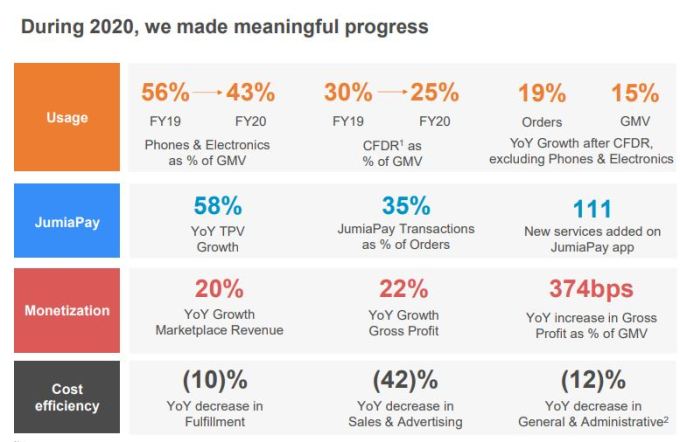- February 24, 2021
- by:
- in: Blog
The European Union has kicked off the first stage of a consultation process involving gig platforms and workers. Regional lawmakers have said they want to improve working conditions for people who provide labor via platforms which EU digital policy chief, Margrethe Vestager, accepted in a speech today can be “poor” and “precarious”. Yet she also
The European Union has kicked off the first stage of a consultation process involving gig platforms and workers. Regional lawmakers have said they want to improve working conditions for people who provide labor via platforms which EU digital policy chief, Margrethe Vestager, accepted in a speech today can be “poor” and “precarious”.
Yet she also made it clear the Commission’s agenda vis-a-vis the issue of gig work is to find some kind of “balance” between (poor) platform work and, er, good and stable (rights protected) employment.
There’s no detail yet on how exactly regional lawmakers plan to square the circle of giving gig platforms a continued pass on not providing good/stable work — given that their sustainability as businesses (still with only theoretical profits, in many cases) is chain-linked to not shelling out for the full suite of employment rights for the thousands of people they rely upon to be engaged in the sweating toil of delivering their service off the corporate payroll.
But that, presumably, is what the Commission’s consultation process is aimed at figuring out. Baked into the first stage of the process is getting the two sides together to try to hash out what better looks like.
“The platform economy is here to stay — new technologies, new sources of knowledge, new forms of work will shape the world in the years ahead,” said Vestager, segueing into a red-line that there must be no reduction in the rights or the social safety net for platform workers (NB: The word ‘should’ is doing rather a lot of heavy lifting here): “And for all of our work on the digital economy, these new opportunities must not come with different rights. Online just as offline, all people should be protected and allowed to work safely and with dignity.”
“The key issue in our consultations is to find a balance between making the most of the opportunities of the platform economy and ensuring that the social rights of people working in it are the same as in the traditional economy,” she also said, adding: “It is also a matter of a fair competition and level playing field between platforms and traditional companies that have higher labour costs because they are subject to traditional labour laws.”
The Commission’s two-stage consultation process on gig work starts with a consultation of “social partners” on “the need and direction of possible EU action to improve the working conditions in platform work”, as it puts it.
This will be open for at least six weeks. It will involve platforms talking with workers (and/or their representatives) to try to come up with agreement on what ‘better’ looks like in the context of platform working conditions, either to steer the direction of any Commission initiative. Or — else — to kick the legislative can down the road on said initiative if they can come up with stuff they can agree to implement themselves.
The second phase — assuming the “social partners” don’t agree on and implement a way forward themselves — is planned to take place before the summer and will focus on “the content of the initiative”, per Vestager. (Aka: what exactly the EU ends up proposing to square the circle that must be squared.)
The competition component of the gig work conundrum — whereby there’s also the ’employer fairness’ dynamic to consider, given platforms aren’t playing by the same rules as traditional employers so are potentially undercutting rivals who are offering those good and stable jobs — explains why the Commission is launching a competition-focused parallel consultation alongside the social stakeholder chats.
“We will soon start a public consultation on this initiative that has another legal base since it is about competition law and not social policies. This is the reason why we consult differently on the two initiatives,” noted Vestager.
She said this will aim to ensure that EU competition rules “do not stand in the way of collective bargaining for those who need it” — suggesting the Commission is hoping that collective bargaining will form some part of the solution to achieving the sought for (precarious) balance of ‘better’ platform work.
Albeit, a cynical person might predict the end goal of all this solicitation of views will probably be some kind of fudge — that offers the perception of a plug for the platform rights gap without actually disrupting the platform economy which Vestager has sworn is here to say.
Uber for one has scented opportunity in the Commission’s talk of improving “legal clarity” for platforms.
The ride-hailing giant put out a white paper last week in which it lobbied lawmakers to deregulate platform work — pushing for a Prop-22 style outcome in Europe, having succeeded in getting a carve out from tightened employment laws in California.
Expect other platforms to follow with similarly self-serving suggestions aimed at encouraging Europe’s social contract to be retooled at the points where it intersects with their business models. (Last week Uber was accused of intentionally stalling on improving conditions for workers in favor of lobbying for deregulation, for example.)
The start of the Commission’s gig work consultation come hard on heels of a landmark ruling by the UK’s Supreme Court (also last week) — which dismissed Uber’s final appeal against a long running employment tribunal.
The judges cemented the view that the group of drivers who sued Uber had indeed been erroneously classified as ‘self employed’, making Uber liable to pay compensation for the rights it should have been funding all along.
So if the EU ends up offering a lower level of employment rights to platform workers vis-a-vis the (post-brexit) UK that would surely make for some uncomfortable faces in Brussels.
While it may be unrealistic to talk about striking a ‘balance’ in the context of business models that are inherently imbalanced, given they’re based on dodging existing employment regulations and disrupting the usual social playbook for profit, he Commission seems to think that a consultation process and a network of overlapping regulations is the way to rein in the worst excesses of the gig economy/big tech more generally.
In a press release about the consultation, it notes that platform work is “developing rapidly” across various business sectors in the region.
“It can offer increased flexibility, job opportunities and additional revenue, including for people who might find it more difficult to enter the traditional labour market,” it writes, starting with some of the positives that are, pesumably, feeding its desire for a ‘balanced’ outcome.
“However, certain types of platform work are also associated with precarious working conditions, reflected in the lack of transparency and predictability of contractual arrangements, health and safety challenges, and insufficient access to social protection. Additional challenges related to platform work include its cross-border dimension and the issue of algorithmic management.”
It also notes the role of the coronavirus pandemic in both accelerating uptake of platform work and increasing concern about the “vulnerable situation” of gig workers — who may have to choose between earning money and risking their health (and the health of other people) via working and thus potential viral exposure.
The Commission reports that around 11% of the EU workforce (some 24 million people) say they have already provided services through a platform.
Vestager said most of these people “only have platform work as a secondary or a marginal source of income” — but added that some three million people do it as a main job.
And just imagine the cost to gig platforms if those three million people had to be put on the payroll in Europe…
In the bit of her speech leading up to her conclusion that platform work is here to stay, Vestager quoted a recent study she said had indicated that 35% to 55% of consumers say they intend to continue to ask for home delivery more in the future.
“We… see that the platform economy is growing rapidly,” she added. “Worldwide, the online labour platform market has grown by 30% over a period of 2 years. This growth is expected to continue and the number of people working through platforms is expected to become more significant in the years ahead.”
“European values are at the heart of our work to shape Europe’s digital future,” she also went on, taking her cue to point to the smorgasbord of digital regulations in the EU’s pipeline — and perhaps illustrating the concept of an overlapping regulatory net that the Commission intends to straightjacket platform giants into more socially acceptable and fair behavior (though it hasn’t yet).
“Our proposals from December for a Digital Services Act and a Digital Markets Act are meant to protect us as consumers if technology poses a risk to fundamental rights. In April we will follow up on our white paper on Artificial Intelligence from last year and our upcoming proposal will also have the aim to protect us as citizens. The fairness aspect and the integration of European values will also be a driver for our upcoming proposal on a digital tax that we plan to present before summer.
“All these initiatives are part of our ambition to balance the great potential that the digital transformation holds for our societies and economies.”







